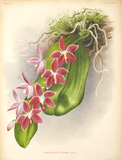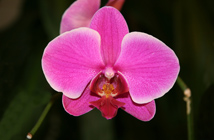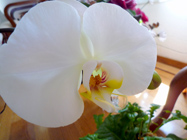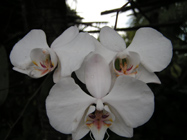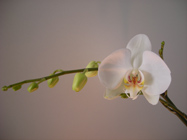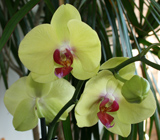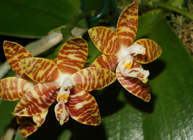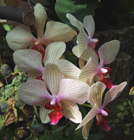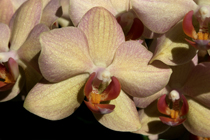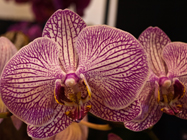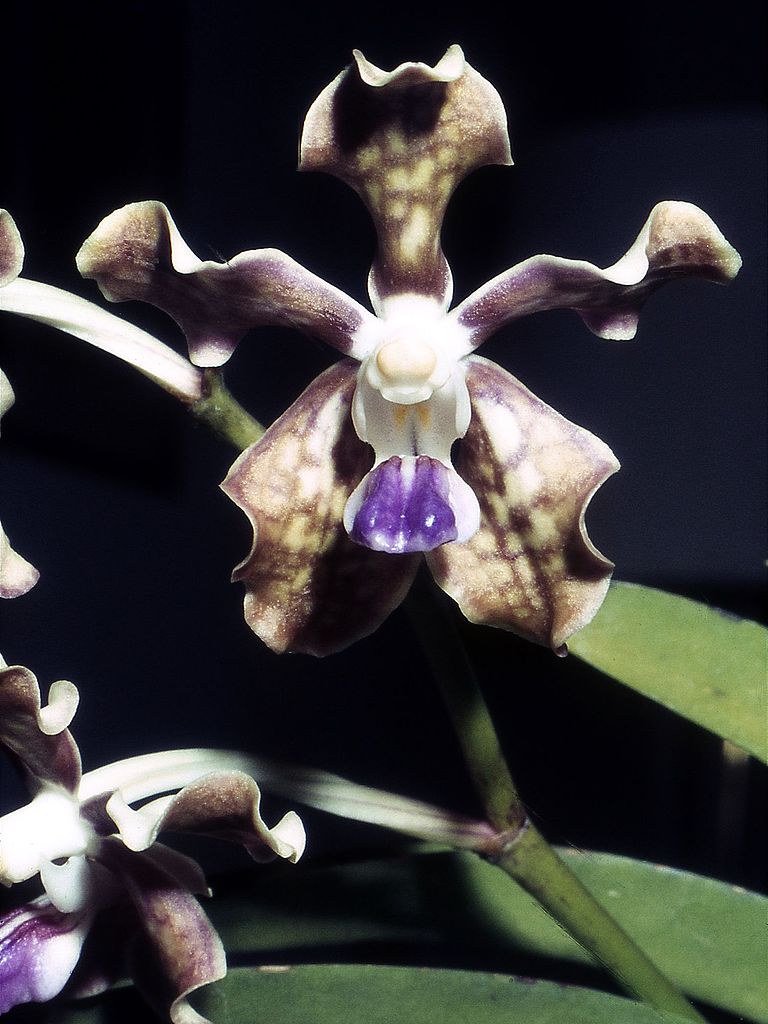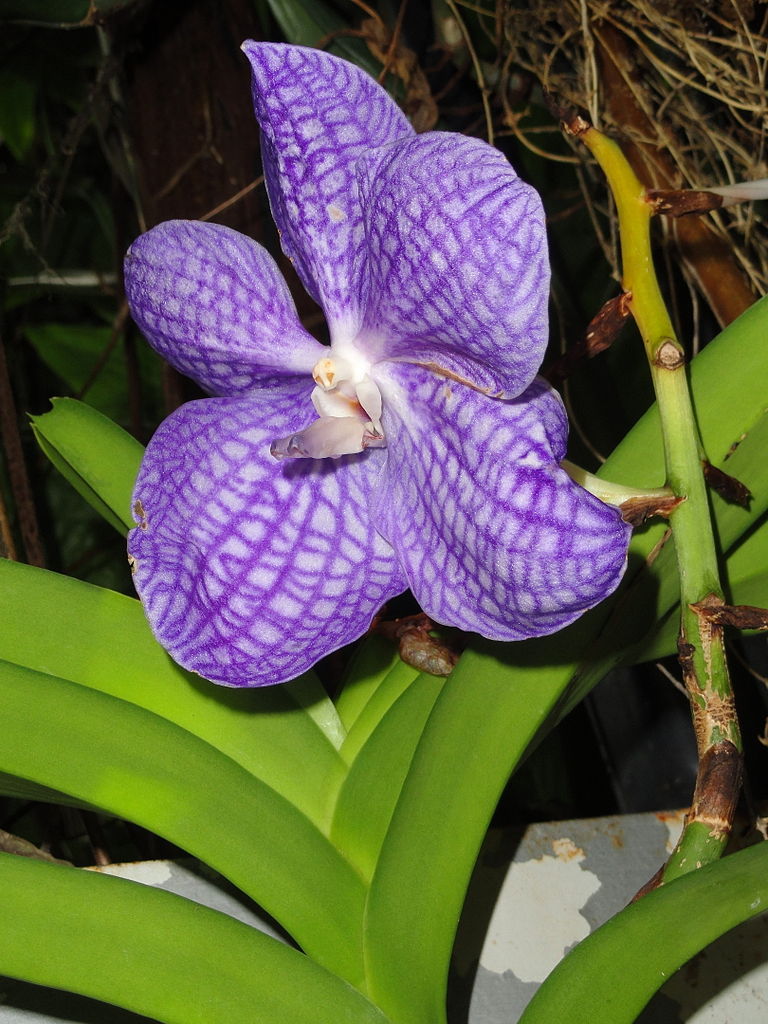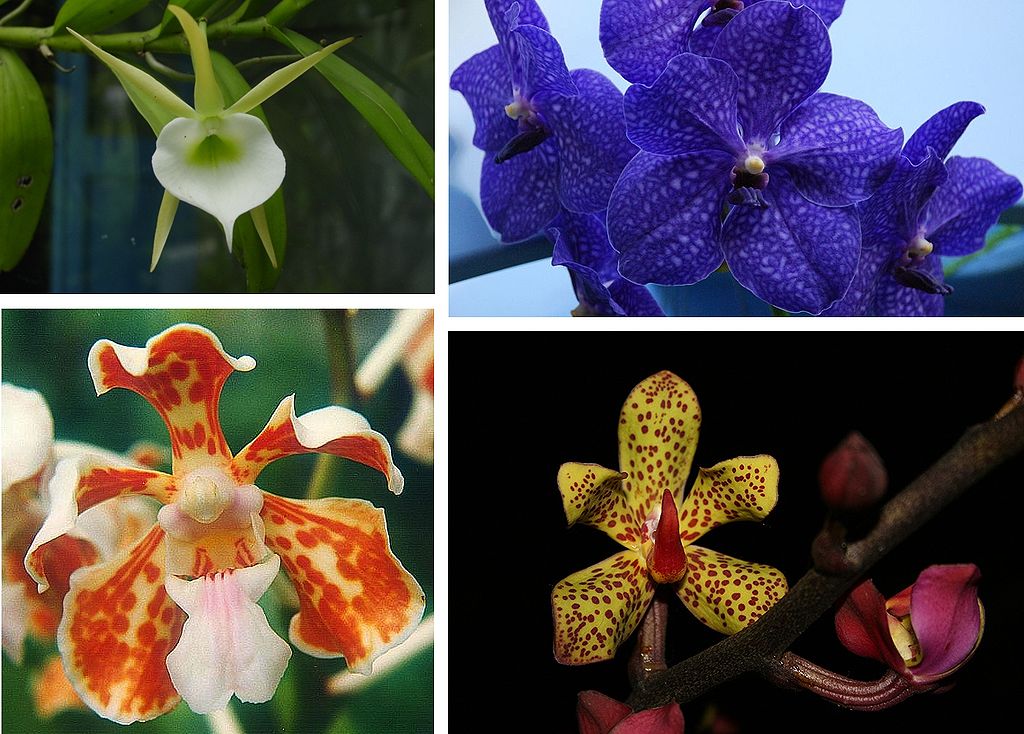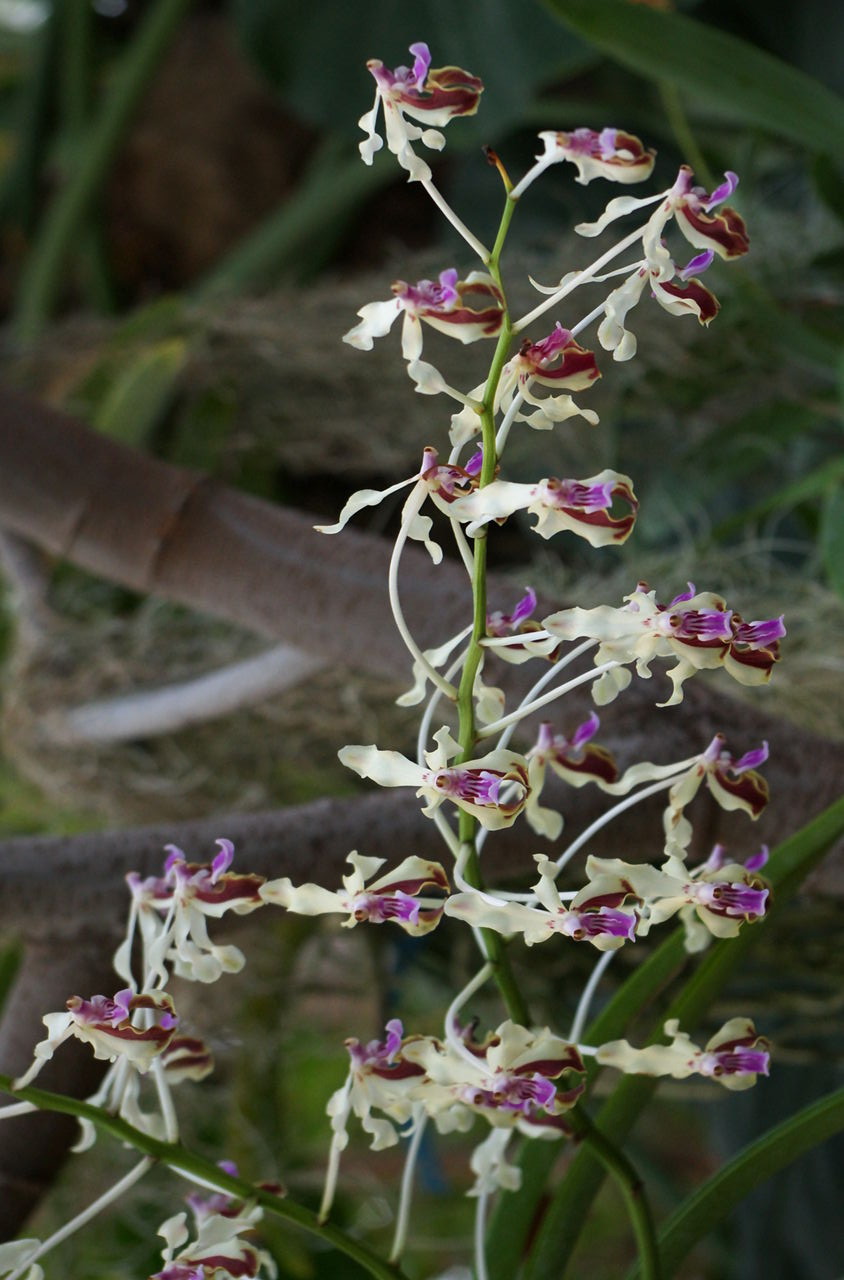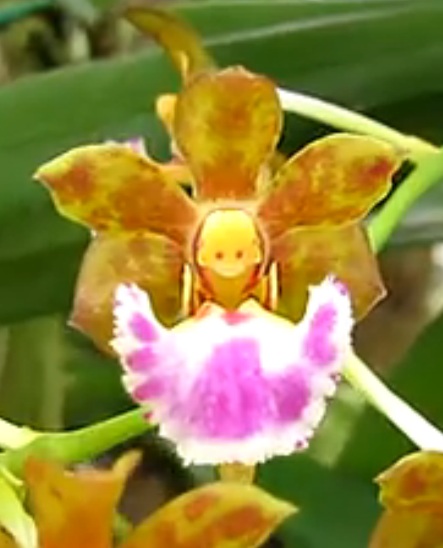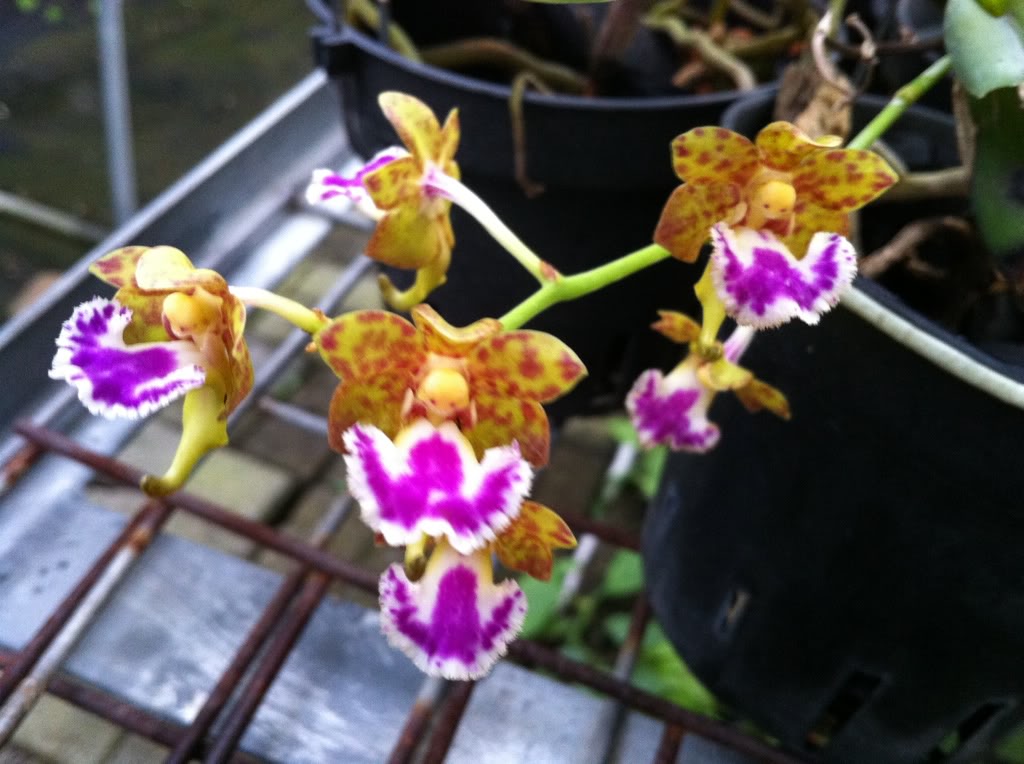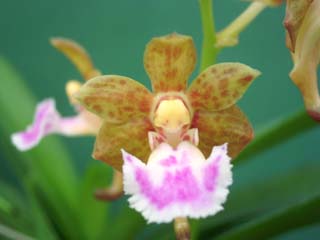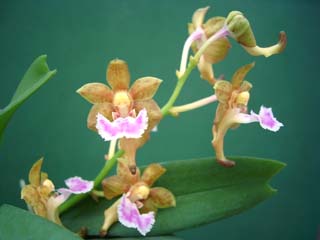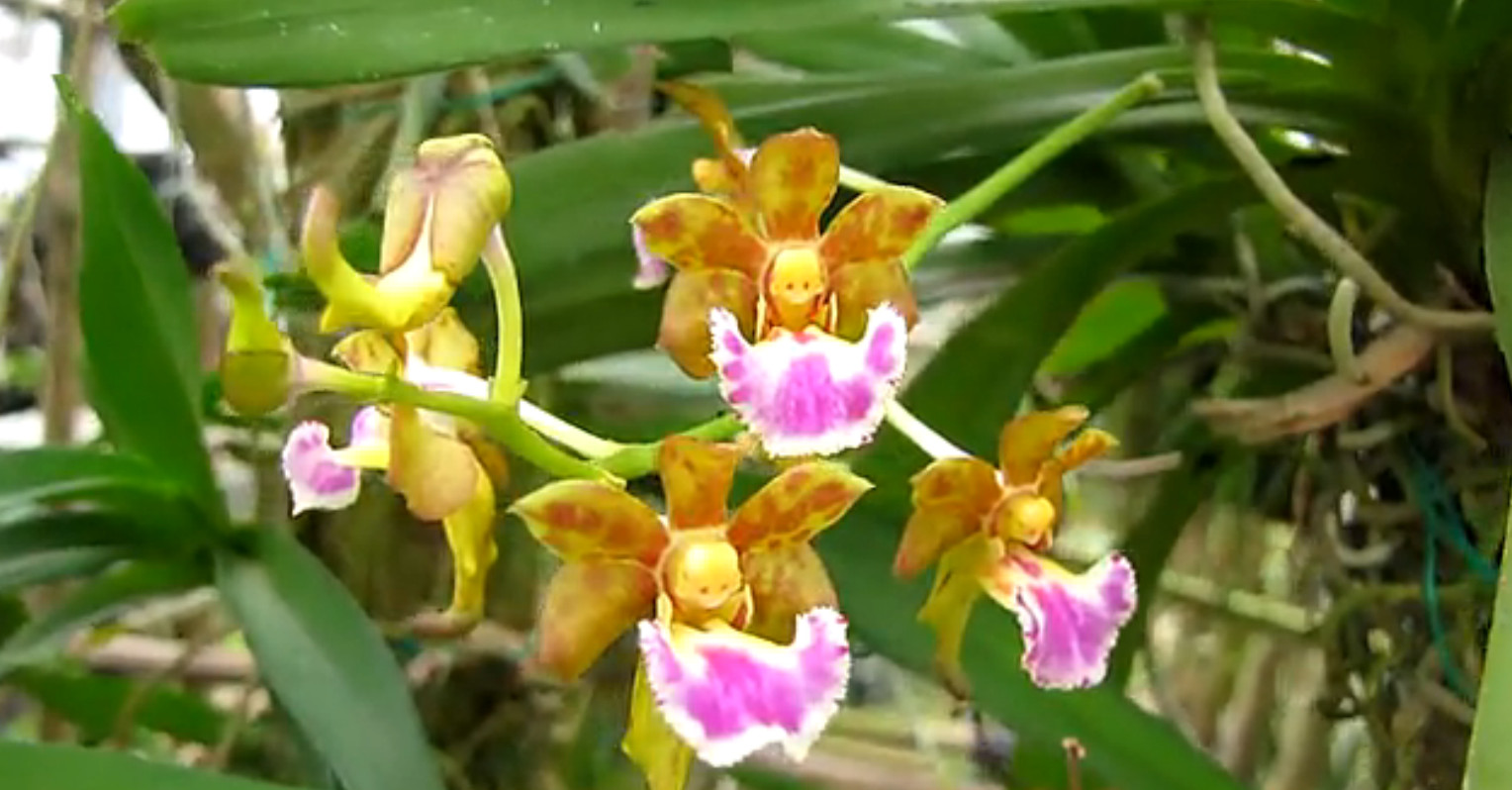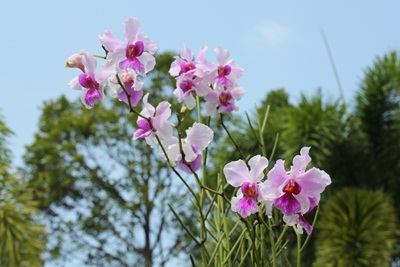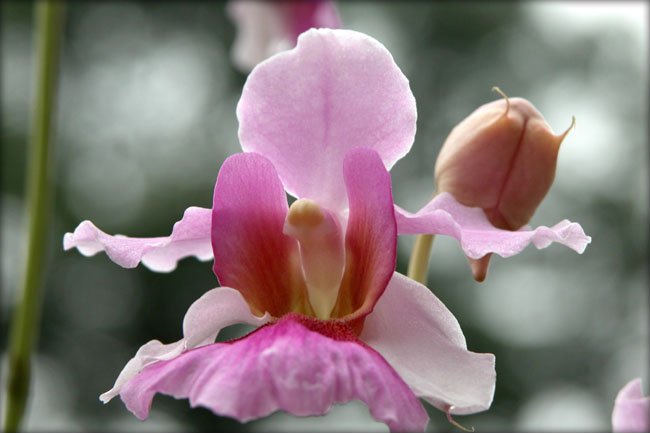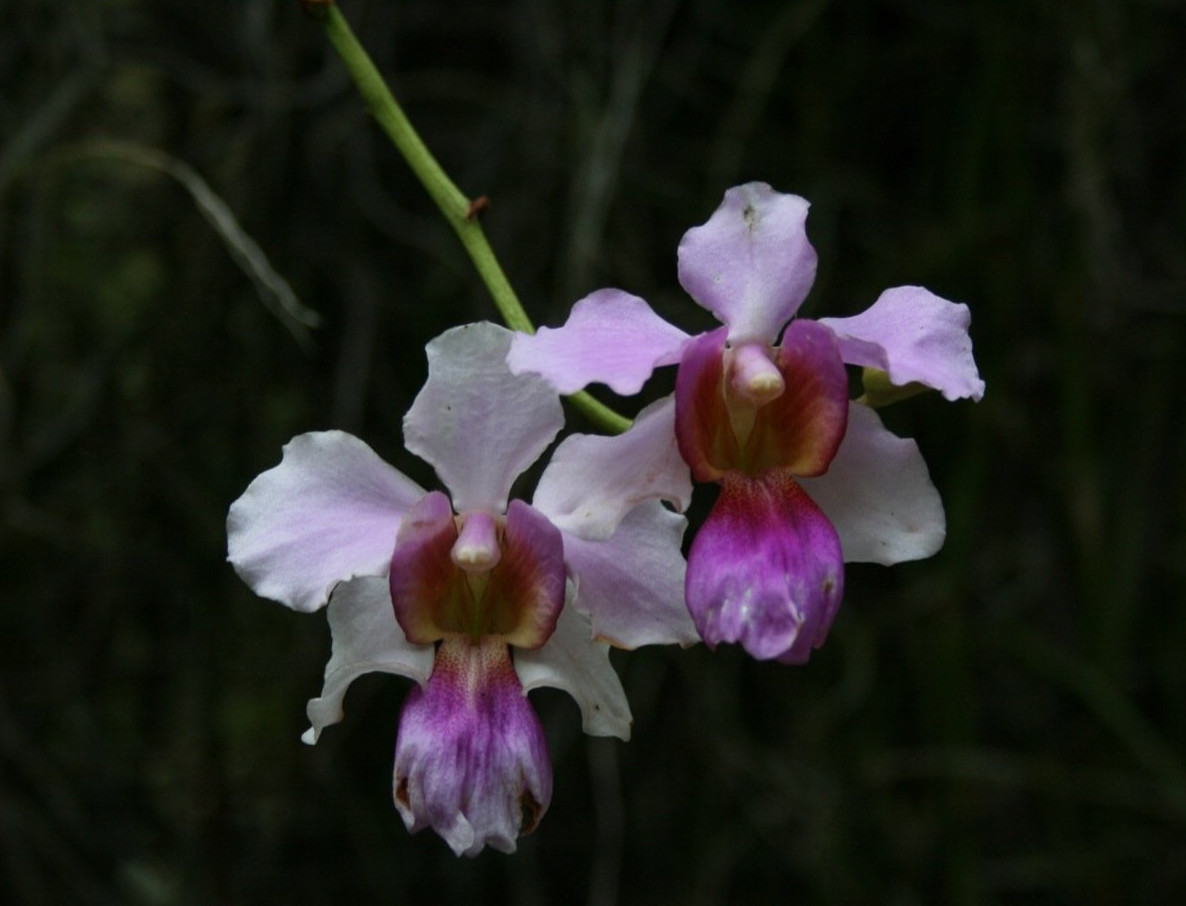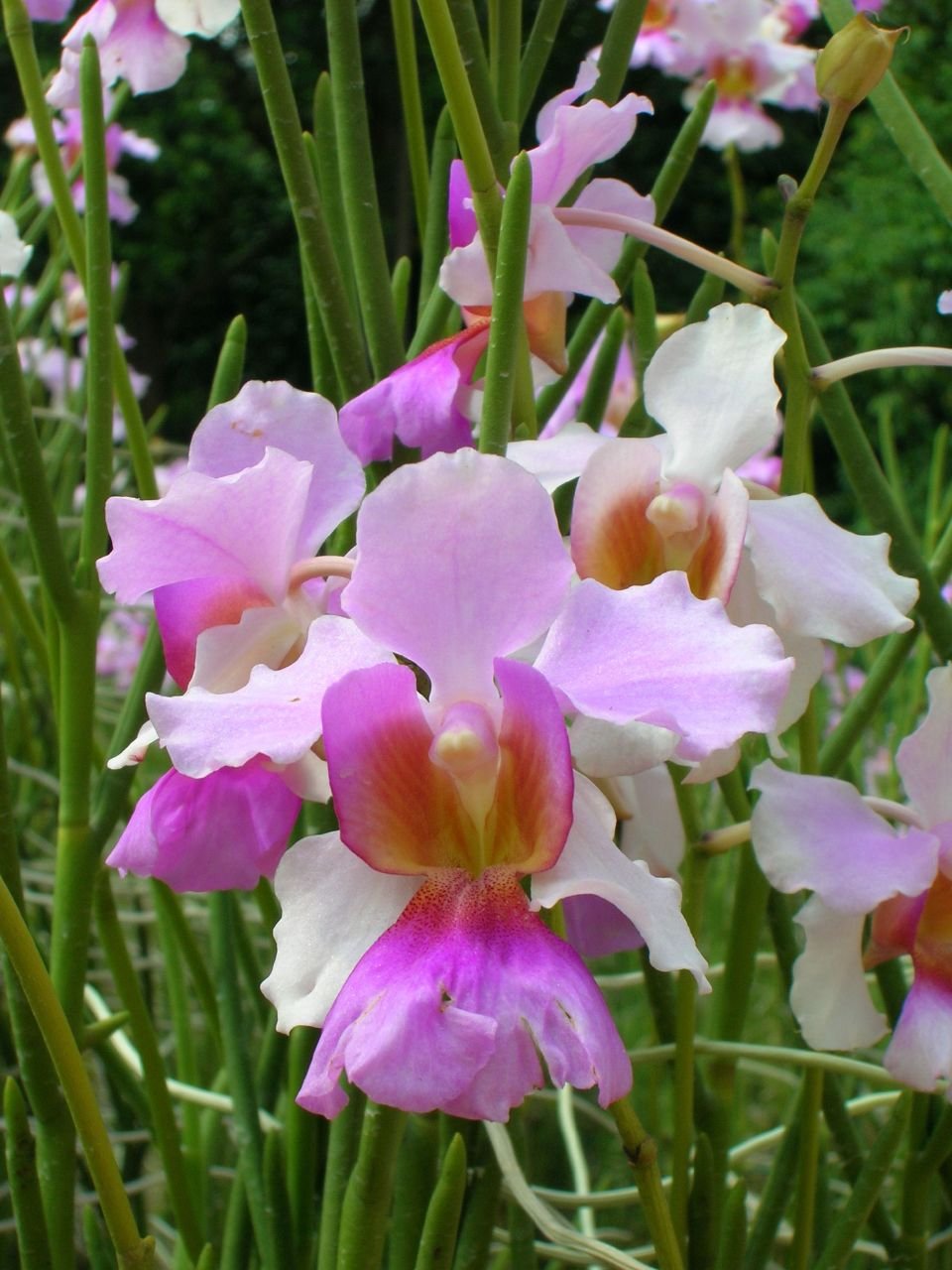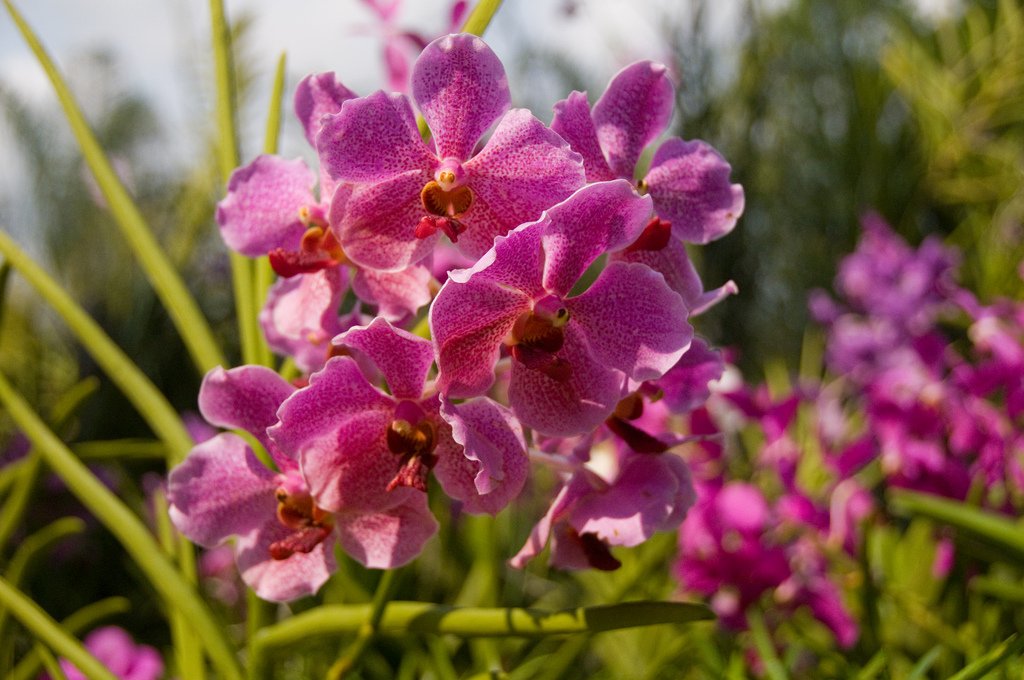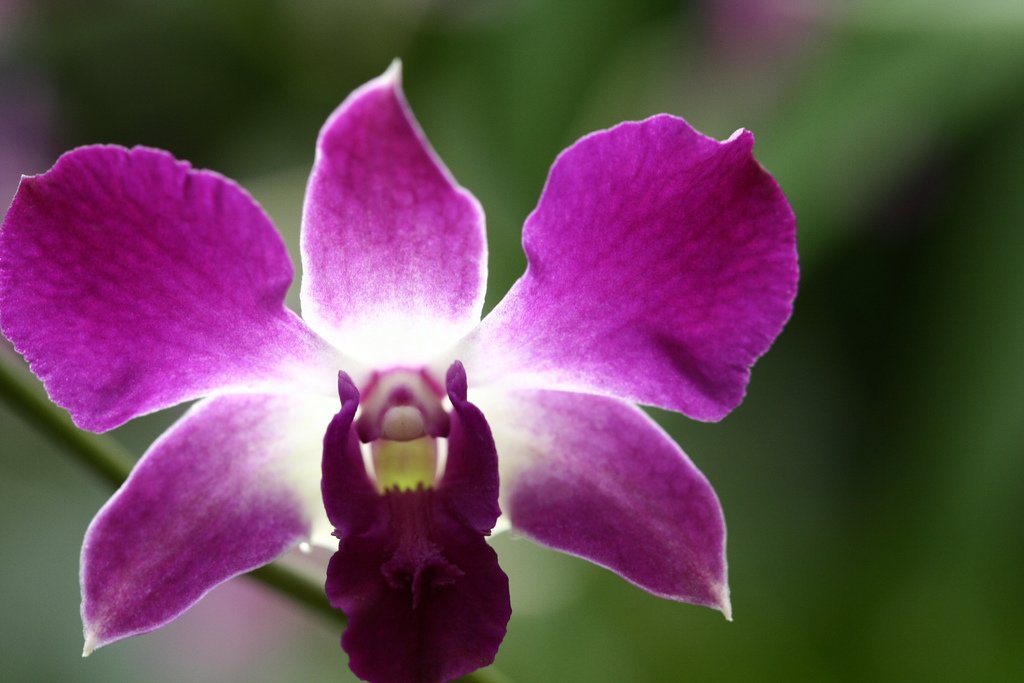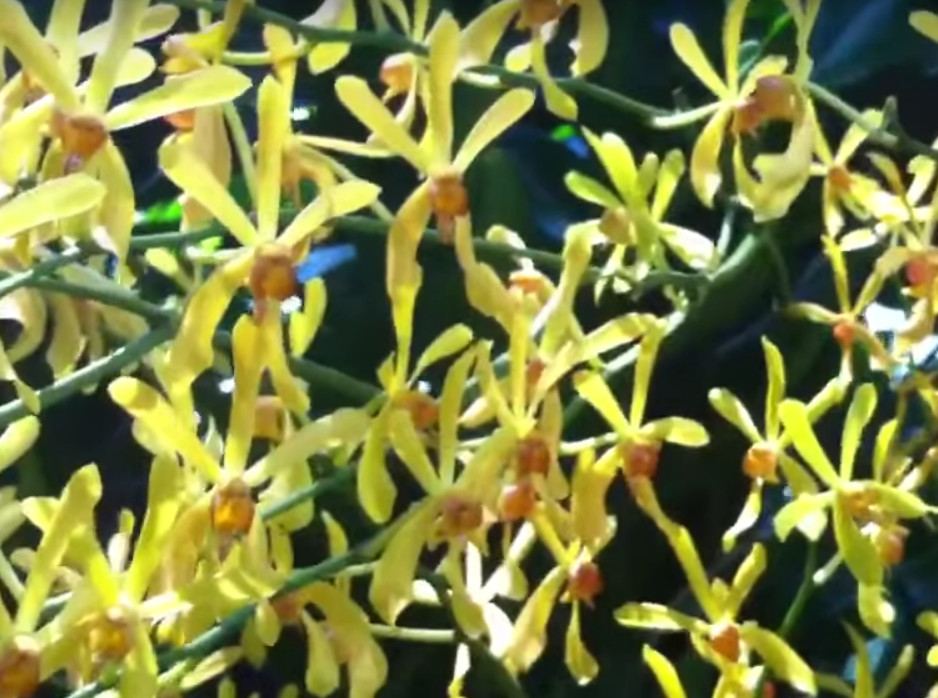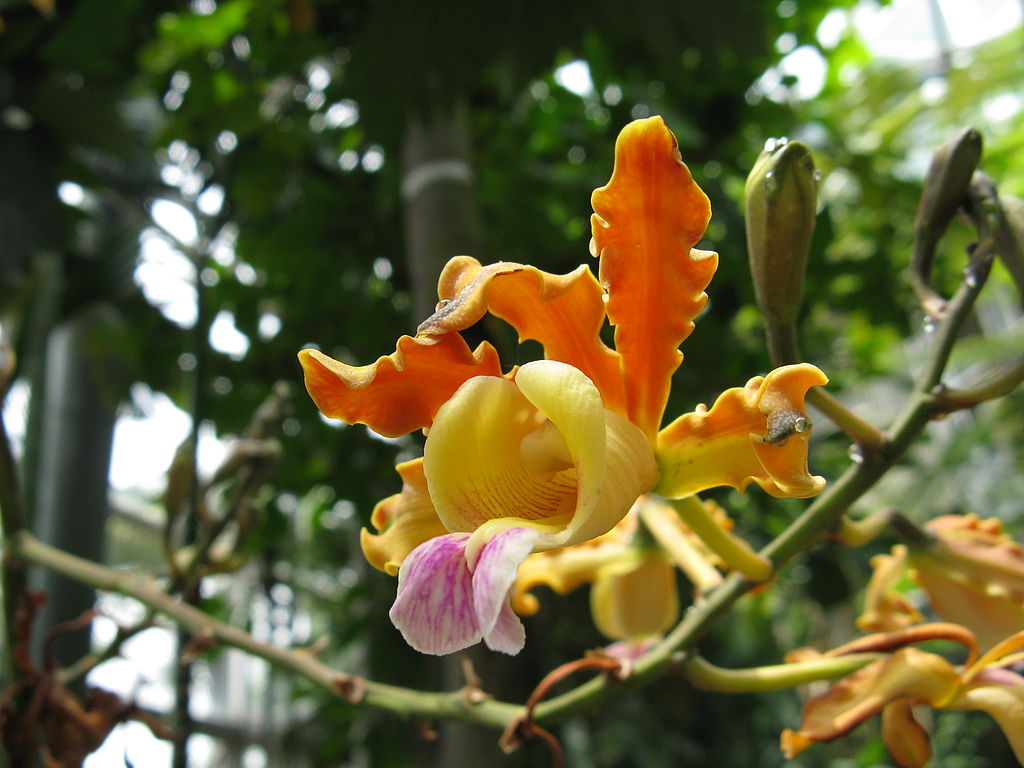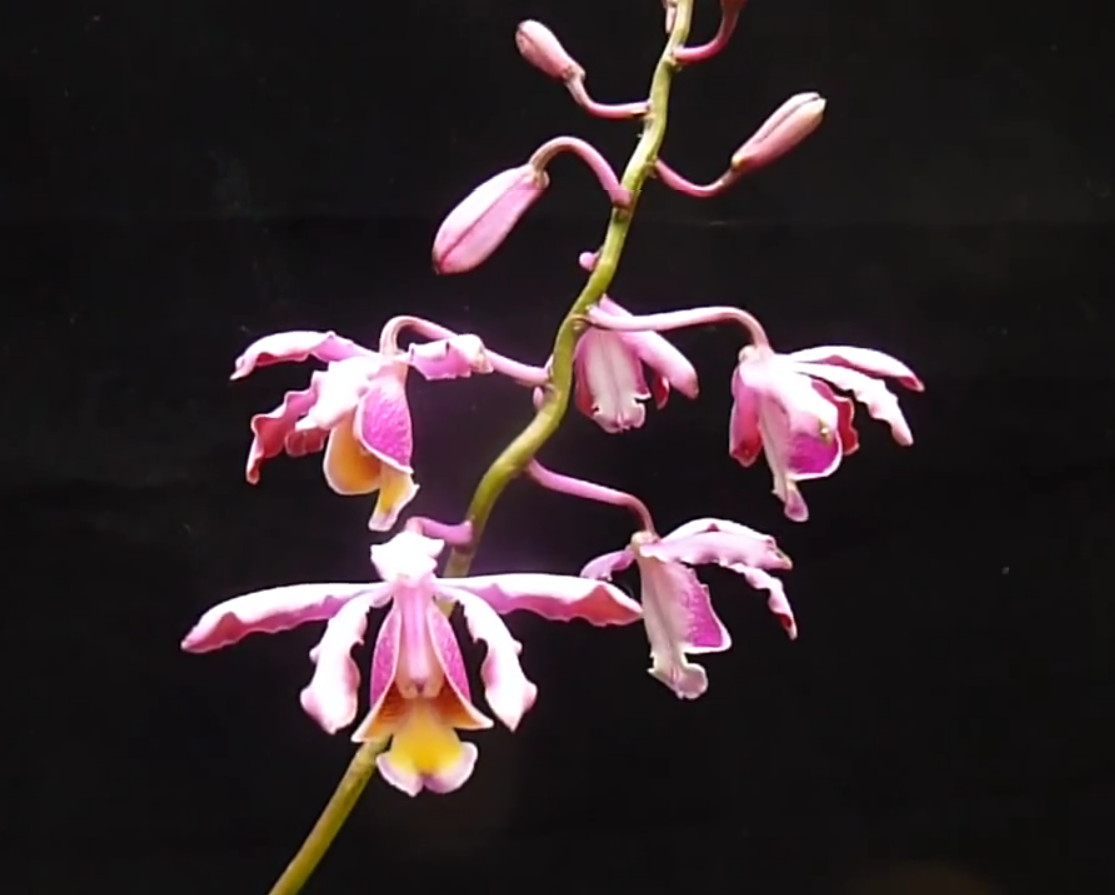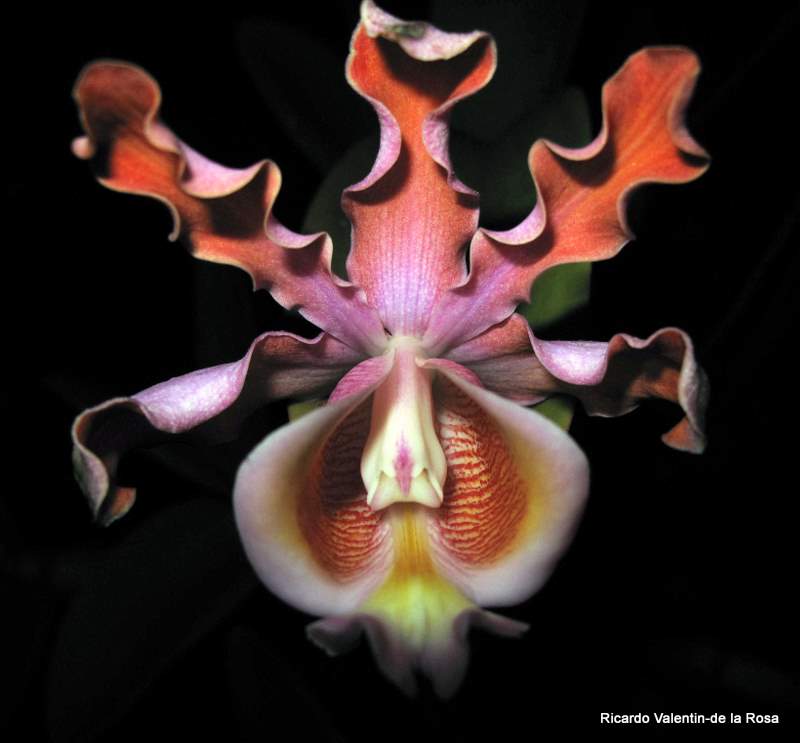Myrmecophila Brysiana
Myrmecophila Brysiana is an species in the genus Myrmecophila .
Description, its flowers are among the most beautiful of the genus but some variability in their colours may indicate there is more than a single species here. (Carnevali 2011.) It is a large epiphyte with fusiform-conical, hollow, sulcate pseudobulbs to 50 cm with 2, coriaceous, ovate-elliptic, apically retuse-rounded leaves. Flowers occur in winter and spring on terminal 900 mm (3') to possibly 1.5 metre (4.92') long, erect, paniculate, inflorescences that are partly covered by sterile sheathing bracts and fertile, triangular, acute floral bracts with many yellow flowers. These are smaller than those of M. tibicinis and have shorter columns. They are also different in having a distinct claw at the base of the lip's mid lobe with only 3 raised or elevated veins on the disc; tibicinis has 5 to 7.
Habitats, epiphytic in low dense mangroves along rivers and seashores to 200 m. (656 ft.) The climate can at times be very hot, but humidity is always high.
Range, a very common and most widely distributed Myrmecophila found from Mexico, (Campeche and Quintana Roo States on the Gulf Coast, to Central America (Belize, Guatemala, Honduras, and Nicaragua, to Costa Rica (Santa Rosa National Park, Guanacaste).
(myrmecodia.invisionzone.com)


Myrmecophila Brysiana orchid grown in Miami Springs, Fl.
Myrmecophila Brysiana



Myrmecophila Brysiana
Schomburgkia brysiana (Myrmecophila Brysiana)
Myrmecophila Brysiana
Myrmecophila thomsoniana (Schomburgkia thomsoniana)
Myrmecophila thomsoniana is an species in the genus Myrmecophila found in the Cayman Islands. This orchid is a small sized, hot growing epiphyte in scrubby bushes close to the sea and exposed to full sun with curved, hollow, pseudobulbs carrying a few apical, elliptic-ovate leaves that blooms in the spring and summer on an erect, to 120 cm long, sometimes branched inflorescence from which arise several to many 12 to 20 successively opening, fragrant flowers occuring over a long period. (orchids.wikia.com)
Probably the best known of Cayman's 26 species of orchids is the wild banana orchid, of which there are two varieties: Schomburgkia thomsoniana var. thomsoniana, which originated on Grand Cayman, and Schomburgkia thomsoniana var. minor, which came from Cayman Brac and Little Cayman.
(www.gov.ky)
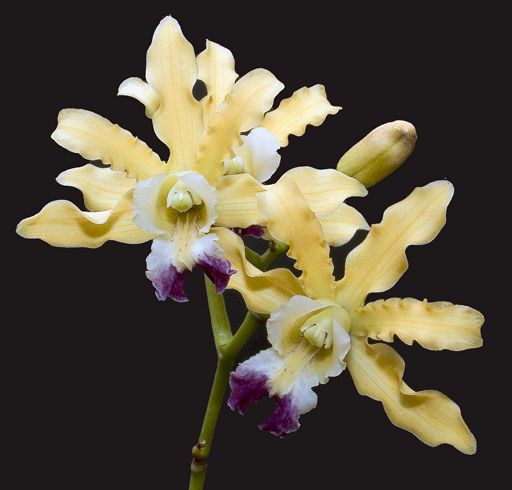


Myrmecophila thomsoniana
Myrmecophila thomsoniana (Wild Banana Orchid)
Myrmecophila thomsoniana, the National flower of the Cayman Islands





